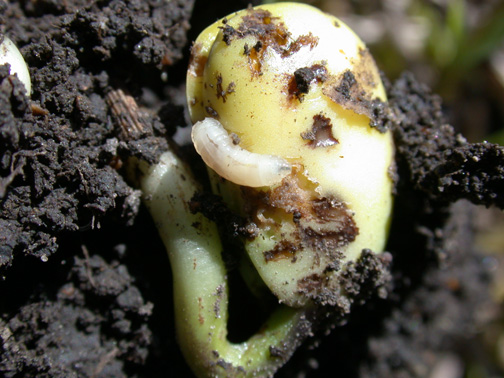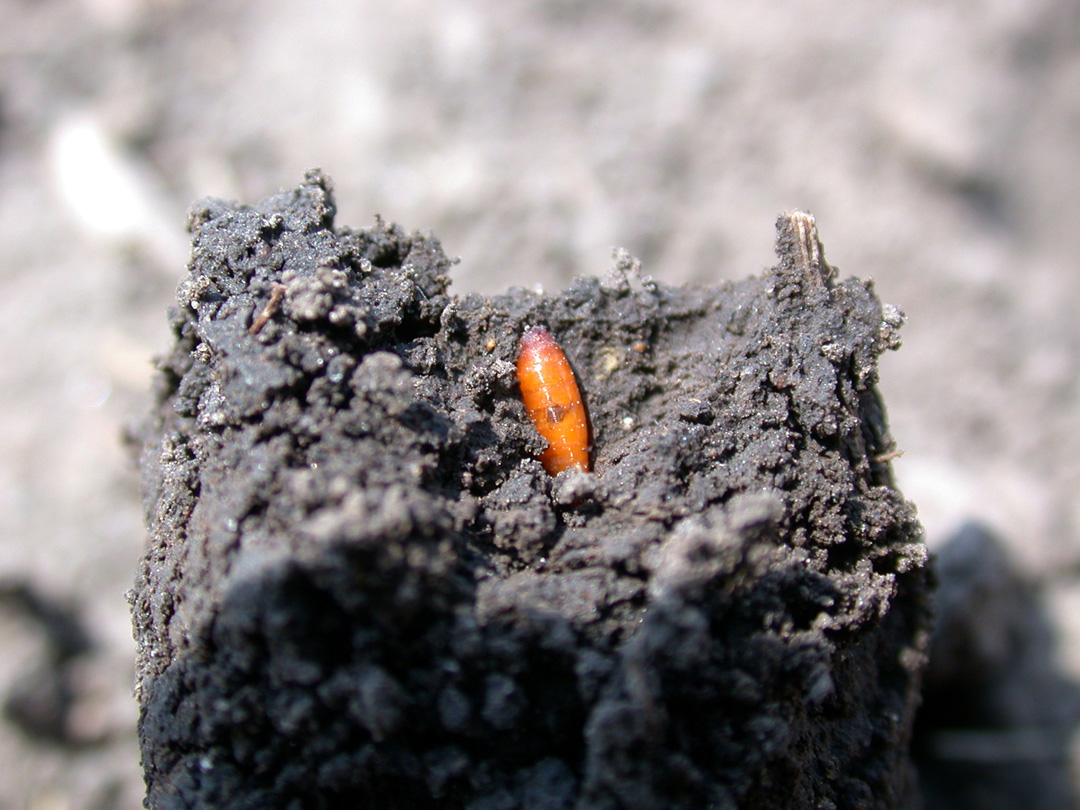Multiple samples of seedcorn maggot damaged soybean seedlings have been submitted to the Purdue Plant and Pest Diagnostic Lab. These damaged seedlings survived the recent snow and freezing temperatures, but not this early season soil pest! Remember that the adult female flies are attracted by rotting organic matter, this gives some clue about where infestations will be severe. Seeds planted into high crop residue, weedy growth, and/or where animal manure was applied are most often subject to attack by this pest.
Seedcorn maggots are small, yellowish-white maggots up to 1/4 inch long. They are the larval stage of a fly, very similar to a housefly in appearance. Soils planted too wet often have open seed slots, attracting flies to climb down into the furrow and deposit eggs in decaying weeds next to the seed. Soybean and other crops are not the main target of this pest, but they will feed on them if they’re available. When the eggs hatch, they burrow into seeds or underground portion of plants and feed. The damage is usually first observed as skips in the row where plants do not emerge, or if they emerge, die back. Seedling blights are usually suspected first by those inspecting the poor stands, but digging around in those blank spots can confirm presence of maggots.

Emerged soybean seedling showing remains of seedcorn maggot damage that occurred below ground. (Photo Credit: John Obermeyer)
Seed applied insecticides will offer some protection of the seed. However, as the seed germinates, below ground portions of the plant, e.g., hypocotyl, are more vulnerable. Slow growing plants are more vulnerable as the seedlings are slow to emerge and subject to continual attack by maggots. Cooler soils exacerbate this situation. Should replanting be necessary, seed-applied insecticide is probably not necessary, as the seedcorn maggot will probably have already pupated (light brown, oval cases) and soon to emerge as an adult fly, meaning the damage is done and risk of further infestations is extremely low.




